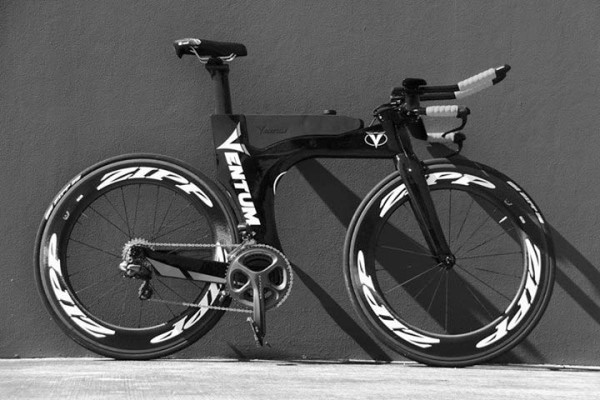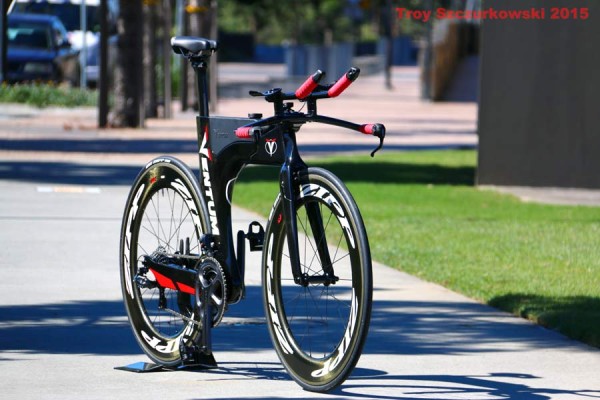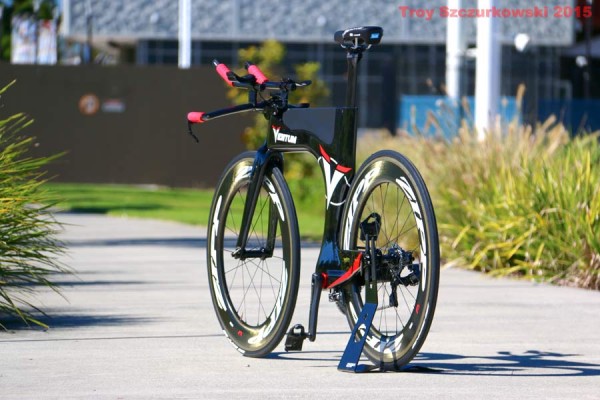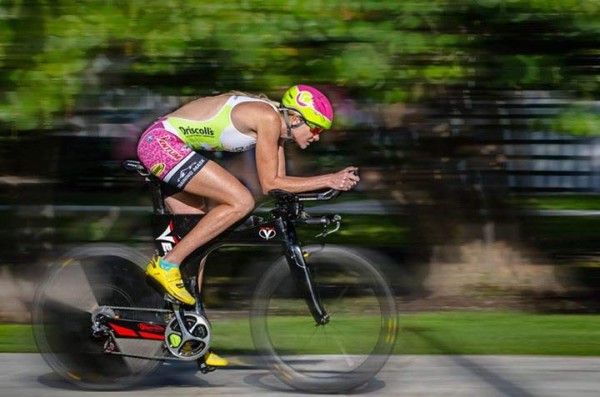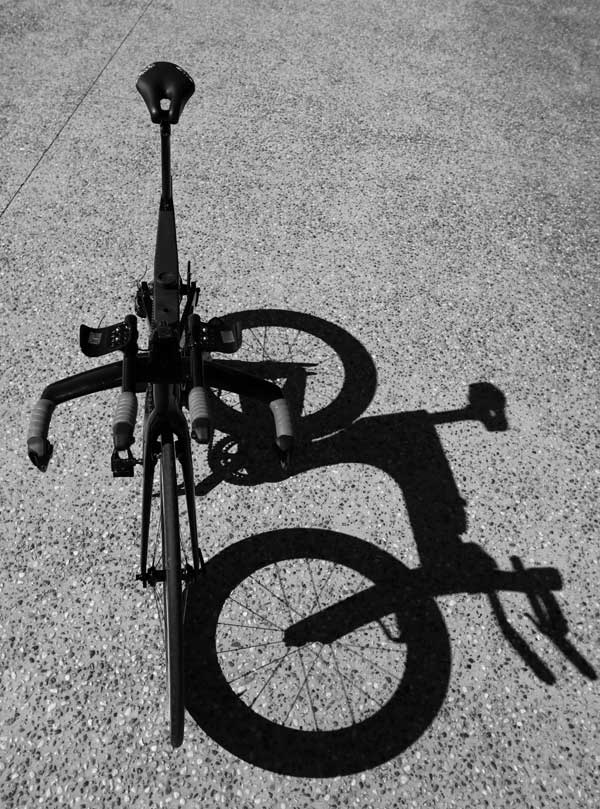
If you’re a tri geek, it’s likely you’ve seen a few shots of the upcoming Ventum Racing bike sneaking around the interwebs. If not, its completely un-UCI legal frame shows just how far things can go when you’ve got no limitations on frame design.
Called the Ventum One, it’s the first bike from upstart Ventum Racing, a brand co-developed by professional triathlete Jimmy Seears. Here’s the story:
“I race professionally, but I got dropped by my bike sponsor,” Seears told us. “My dad and I had always tinkered with and built things, so we thought we’d build a bike. How hard could it be, right?
“We started messing with different designs, and we really liked the Lotus 110 from the mid ’90s, so we started with that. We built the first prototype in Australia in house, which we tested with strain gauges and on the road. Then we tested the second version in the wind tunnel and it was a lot faster than we expected. And that was with a rather messy home made build…the handlebars were pretty messy and jumbled together. So we continued refining the design, and will continue to into the future. So the one you see here now is close, but not quite the final version that’ll ship later this year.”
Seears continues: “There are some angles to the downtube that are critical for proper stiffness but terrible for aerodynamics. So the easiest way to improve aerodynamics was to get rid of the downtube. That tube is very old fashioned, from the original bike designs and was important structurally then. But with modern materials and design capabilities, there’s no need to stick with it. Look at what they’re doing with F1 racing or jets. Bikes don’t see anywhere near those same loads.”
Getting rid of the downtube was just the first step. Seears said the consistent top tube section keeps the air flowing over it because of the overall shaping from nose to tail. The cowl and fairing at the top of the fork is pointed, and then the widest part of the top tube is near the center. That silhouette improves laminar air flow over the entire top tube, which reduces drag.
The front brake is currently a TRP TTV that’s covered with a light plastic fairing that runs all the way up in front of the head tube, too. They’re working on a new fork design that may change which brakes are used, in which case they’ll look at whether an existing solution works or they need to create a new caliper altogether.
On top of the top tube is an integrated water bottle that holds 1.4 liters (47oz, or about two large water bottles worth). It’s designed to keep you tucked into the aero position while hydrating. They’re working on tool storage solutions, too, which will mostly likely be tucked under the seat.
“We’ve designed it to be very adjustable,” Seears said. “By using a standard 1-1/8” steerer, you can cut it and the fairing to length. That makes it easily adjustable without giving up the aero benefits. The seat has a lot of adjustment fore/aft and up/down, too. Despite the odd looks, it’s very easy to build…which is a very good thing for triathletes that regularly pack and unpack their bikes for travel. That, coupled with four frame sizes, means it’ll fit just about anyone. And it can be run with standard drop bars if you just want a very, very aero road bike.
Seears says a complete bike with Mavic CXR80 wheels and Dura-Ace group comes in at 20.2lb, but that’s a prototype frame that’s using a thicker clear coat than what’ll be used in production. The layup is pretty much final, though, and Jimmy says they’re seeing very little deflection, even after blowing through 125% of an EU safety test equivalent.
Prototypes are currently being raced by Leanda Cave (shown, 2nd at Ironman Texas), Kyle Buckingham, Alicia Kaye and, of course, Jimmy himself.
Retail pricing is still being finalized, but they’ll offer a frameset (frame, fork, seatpost, headset, handlebar, stem and front brake), plus Dura-Ace Di2/808 Firecrest and Ultegra Di2/Zipp 60 complete bikes. Both will get an ISM saddle.
So, about those aerodynamics…
“We (wind tunnel) tested against a Cervelo P5, Scott Plasma 30, Felt IA and others. When we swept the wind angle from 0º to 20º and averaged the results, the closest competitor was the Cervelo P5, but we were still showing an average of 33% less drag in race trim (ie. completely built and accessorized bike).”
The full test data will be published when they open up for presale in June. The first bikes should arrive in August, but they’re promising delivery in September or October just to be safe.
